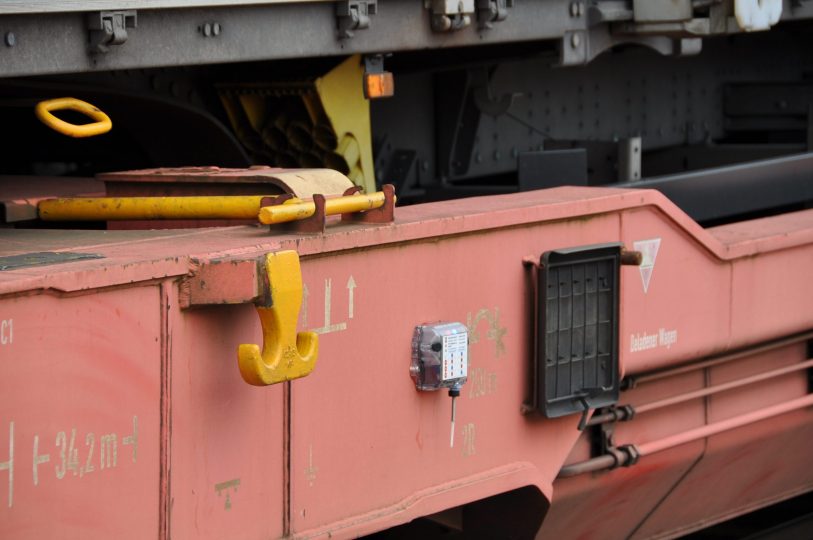Nexxiot’s kingpin monitor passes the test

Nexxiot tested its new kingpin monitor system during a trial session at the DUSS terminal in Hamburg-Billwerder. The trial was organised for representatives of the AGORA Intermodal Terminals working group, who were left impressed by the safety characteristics displayed.
The new kingpin monitor was developed jointly by Nexxiot and VTG. Its purpose is to check the safety of semi-trailers while loaded on rail cars and provide constant monitoring of their condition during the trip. The safety solution comprises a sensor application that was already tested on 70 double pocket wagons from VTG’s fleet.
Since pocket wagons can prove sensitive to unfavourable conditions such as strong winds or steep routes, the companies test the safety solution under very harsh industrial conditions to ensure its functionality. After the test at the DUSS terminal, the solution will be probably ready to launch officially in the coming November.
Positive impression
AGORA Intermodal Terminals is a consortium representing the interests of combined and intermodal transport terminals. Some of its members include DB Netze, OBB Infra, Kombiverlehr, UIC and Baltic Rail Gate. The consortium’s approval of the new monitoring system is crucial since it proves its adequacy to use in intermodal transport.

Antje Falk, founding member of AGORA and Managing Director of Baltic Rail Gate GmbH, commented that AGORA was impressed by the excellent readability of the Nexxiot display. Kristian Kölsche, also Managing Director at Baltic Rail Gate GmbH, added that “safety is a number one priority at the terminals. Therefore, we welcome any technological innovation, such as the Nexxiot Kingpin Monitor, that brings more safety to operations.” Finally, Stefan Kalmund, CEO of Nexxiot, stretched the importance of external validation from the industry and independent organisations in developing new solutions.
How the system works
In practice, the kingpin sensor checks whether kingpin locks are attached correctly and if their hitch status is open or locked. The sensor has two displays, and each one sticks on either side of the pocket wagon. Apart from safety confirmation during the pre-trip checks, the sensors will also apply automated checks at any point of the journey. In case of a safety incident, data collected from the sensors can be used for the investigations.
Moreover, the safety sensor will be handy in terms of assisting workers during loading processes. With a LED light on its control module, it can help loading staff confirm that the pin is in the proper position, while another LED light indicates the correct attachment of the locking latch. In this way, the staff will not need to rely on acoustic signals to see if the pin is inserted correctly into the support frame.
Also read:
You just read one of our premium articles free of charge
Want full access? Take advantage of our exclusive offer





